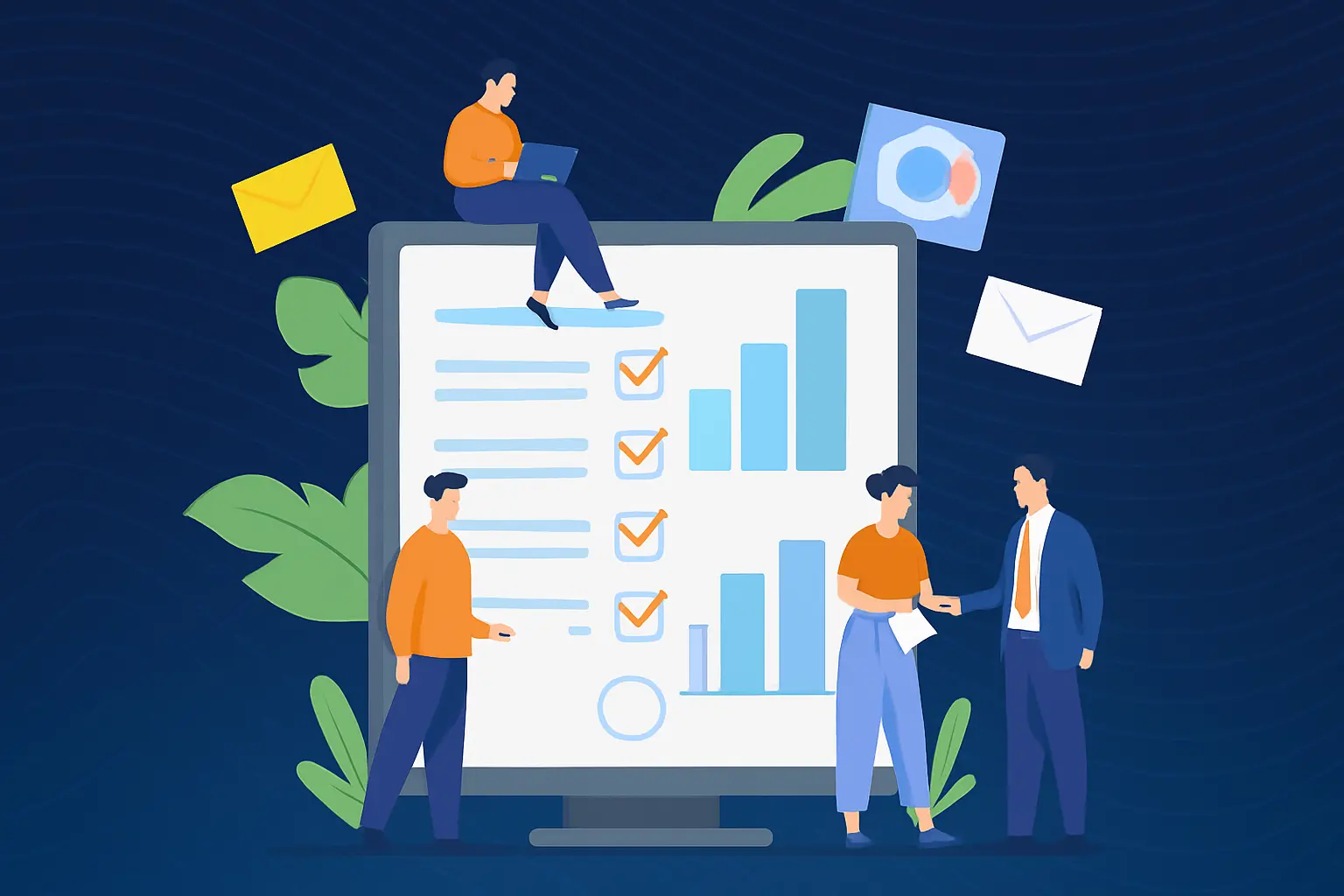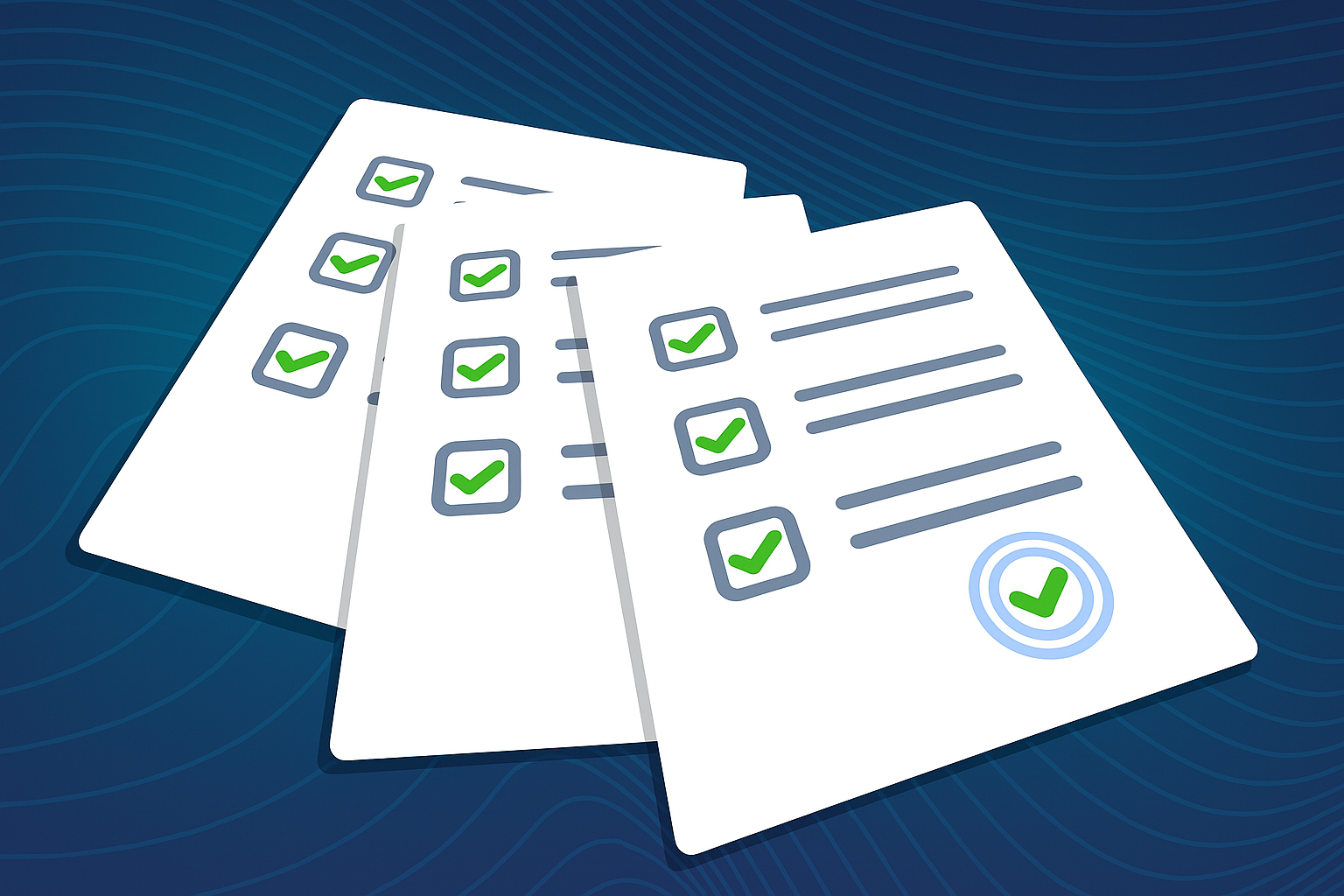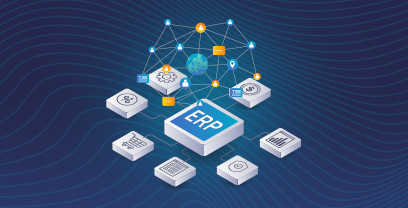Procurement leaders face more scrutiny than ever. Finance demands measurable savings, boards expect resilience, and regulators require ESG accountability. Which KPIs truly demonstrate performance?
The data that should tell procurement’s story – spend patterns, supplier performance, and process efficiency – is fragmented across disconnected systems. Without a clear line from metrics to outcomes, you will undoubtedly struggle to demonstrate Procurement’s true value, or provide the visibility or credibility demanded by upper management.
Insights from 3,500 global procurement leaders revealed that procurement is evolving from a support function to a driver of growth. To that end, stronger data, insight, supplier capabilities, and responsible purchasing are essential. That’s why your KPI strategy shouldn’t just tell you “what to track,” but provide a defensible, categorized list of metrics that can stand up to finance, risk, and leadership.
This blog explores how top teams are operationalizing key procurement indicators (KPIs) through dashboards, real-time tracking, and OKR alignment. We outline the most critical KPIs to track across outcome categories (i.e. cost, performance, operations, and strategy).
We also reveal how AI and automation are reshaping KPI capture and analysis, and how the right KPIs connect daily operations to strategic outcomes.
Key Takeaways
- Procurement leaders must track KPIs that go beyond cost savings to include supplier reliability, process efficiency, and strategic alignment, ensuring their function earns credibility with finance, boards, and regulators.
- The most effective KPI strategies categorize metrics into outcomes – cost, supplier performance, operational efficiency, and enterprise strategy – so leaders can connect data directly to business value.
- Dashboards, real-time tracking, and OKR alignment are transforming fragmented data into actionable insights, enabling procurement and contract management teams to shift from back-office support to a recognized driver of growth.
Cost KPIs That Actually Influence Budget Decisions
The impact of procurement on the bottom line is judged by financial outcomes, and cost KPIs are the bridge connecting sourcing decisions to budget credibility with the CFO and finance team.
Cost KPIs demonstrate budget performance and spend control at both strategic and tactical levels. And, with real-time visibility through spend analytics dashboards, they ground decisions in accurate, integrated data.
Here are the top cost KPIs you should be tracking:
- Cost Savings: Captures realized reductions from negotiations, supplier consolidation, or process improvements. Savings directly impact the bottom line and are a core expectation from finance. Dashboards track savings by category, project, or supplier, helping you to prove tangible ROI to the CFO and align efforts with broader financial goals.
- Cost Avoidance: Represents expenses prevented through proactive measures such as price holds, specification changes, or demand management. While less visible in financial statements, avoidance showcases procurement’s foresight in reducing future risk exposure. Dashboards surface these metrics alongside realized savings, giving leadership a fuller view of value creation.
- Maverick Spend: Unapproved purchases made outside of contracts or negotiated channels. High levels of maverick spend erode savings and complicate forecasting. Dashboards detect these transactions in real time, flagging variances against approved budgets and enabling corrective action before finance sees unwanted surprises.
- Spend Under Management: The percentage of total spend actively managed through procurement processes, contracts, and approved suppliers. A higher ratio indicates better control and alignment with financial planning. Dashboards visualize this KPI alongside spend analysis data, highlighting gaps in coverage and opportunities to drive greater value under procurement’s oversight.
- Total Cost of Ownership (TCO) and Budget Adherence: TCO measures purchase price and lifecycle costs such as maintenance, training, and disposal. These costs are critical for CapEx and services. Budget adherence compares actual vs. planned spend, a metric finance watches closely. Dashboards enable continuous monitoring of these metrics, to help you align spend with forecasts and avoid costly overruns.
Next, we’ll take a look at performance KPIs that are essential indicators of both risk exposure and long-term reliability.
Supplier Performance KPIs That Signal Risk and Reliability
Supplier scorecards are only helpful if they have access to accurate, timely data; otherwise, reviews become anecdotal and reactive. By tying performance measurement to digital supplier relationship management (SRM) platforms, you can gain a real-time, defensible view of supplier reliability, risk, and long-term value.
These procurement performance metrics can help you move become more proactive about governance:
- On-Time Delivery: Measures whether goods or services arrive according to agreed schedules. Consistently late deliveries disrupt production and revenue, while on-time performance strengthens trust. Dashboards benchmark supplier delivery time and supplier availability against SLAs, giving your team and operations an early warning system for disruptions.
- Supplier Defect Rate: Tracks the frequency of quality issues such as product defects, service failures, or rework. High defect rates inflate costs and erode customer satisfaction. Dashboards highlight defect trends by category or supplier, allowing you to engage suppliers early and enforce continuous improvement programs.
- Contract Compliance: Assesses whether suppliers adhere to agreed terms, including pricing, service levels, and legal obligations. Poor compliance increases costs and exposes the business to risk. Dashboards surface non-compliant activity in near real time, ensuring suppliers stay accountable to contractual commitments.
- Supplier Responsiveness: Evaluates how quickly suppliers reply to RFPs, RFQs, or change orders. Slow responses stall sourcing cycles and erode agility. Dashboards track average response times and supplier lead time, helping you to identify partners that enable fast decision-making and align with the pace of the business.
- Supplier Risk Rating: Aggregates financial health, geopolitical exposure, and compliance records into a single, actionable score. A strong rating signals resilience; a low score flags potential supply disruptions. Dashboards centralize these inputs, enabling procurement to map risk across the supplier base and align with enterprise risk management.
By embedding these KPIs into supplier scorecards and SRM systems, procurement can continuously track performance, mitigate risk, and strengthen supplier relationship management, ultimately ensuring that reliability is not just assumed, but proven.
Operational KPIs That Reveal Process Inefficiencies
Operational excellence is critical to procurement’s credibility and measuring how efficiently spend moves from request to payment reveals where performance gains can be made. The credibility of the procurement team depends as much on the efficiency of internal processes that move spend from request to payment as it does on the quality of its supplier relationships.
The following operational KPIs help uncover inefficiencies that slow down execution and drive up costs. By connecting process inefficiencies directly to their impact on working capital, you can demonstrate measurable improvements that matter to both finance and operations.
- Purchase Requisition Cycle Time: Measures the time it takes to convert a request into an approved requisition. Long cycle times frustrate business stakeholders and delay sourcing. Streamlined purchase requisitions tracked through dashboards help to speed up demand intake and reduce internal bottlenecks.
- Purchase Order Cycle Time: Tracks how fast a PO is issued after the requisition is approved. Shorter PO cycles improve supplier engagement and delivery timelines. Dashboards and purchase order automation can help you standardize workflows, cutting delays that impact working capital.
- Purchase Order Accuracy: Assesses whether issued POs match negotiated terms and supplier confirmations. Inaccurate POs lead to invoice disputes and strained supplier relationships. Dashboards flag mismatches early, reducing rework and strengthening payment discipline.
- Invoice Exception Rate: Captures the percentage of invoices flagged for errors or mismatches against POs. High exception rates inflate processing costs and delay supplier payments. Dashboards with automated invoice processing help reduce exceptions and protect working capital by validating data in real time.
- % of Invoices Processed Automatically: Indicates the proportion of invoices handled without manual intervention. Higher automation lowers processing costs and accelerates payment cycles. Dashboards benchmark automation levels and highlight opportunities to expand touchless processing.
- Time to Onboard New Suppliers: Measures how quickly procurement can vet, approve, and activate a supplier. Prolonged onboarding stalls sourcing and impacts agility. Dashboards streamline workflows and track approval cycle times to keep supply bases responsive.
- Touchless Order Rate: A key P2P automation benchmark that reflects the percentage of POs created, approved, and transmitted automatically. A high rate signals maturity. Dashboards show where manual interventions remain so you know where to invest in automation.
- Cycle Time by Category: Compares sourcing and fulfillment times for direct vs. indirect categories. Longer cycles in indirect procurement spend often reveal hidden inefficiencies. Dashboards enable category-level insights, helping teams prioritize resources where cycle times have the greatest impact on working capital.
In short, operational KPIs can help you keep a pulse on procurement efficiency to protect cash flow, strengthen compliance, and improve business agility.
Strategic KPIs That Align Procurement to Enterprise OKRs
KPIs can also be used to show how the procurement function contributes to the company’s broader goals, especially since finance, ESG, risk, and innovation leaders increasingly expect procurement to demonstrate alignment with enterprise OKRs.
According to the Ardent Partners 2023 report, top-performing teams are measured on resilience, sustainability, and growth as well as efficiency, so embedding those KPIs into procurement strategy and digital procurement platforms makes sense.
Some key operational KPIs include:
- % of Diverse Suppliers: Tracks spend with women-owned, minority-owned, or small/local businesses. This KPI demonstrates procurement’s role in advancing corporate social responsibility while broadening the supplier base for resilience. Dashboards monitor progress toward diversity goals and ensure alignment with board-level ESG commitments.
- % of Sustainable Spend: Measures spend directed toward environmentally responsible suppliers, products, or services. This KPI links directly to enterprise climate and sustainability objectives.
That alignment matters more than ever. According to EY, 64% of CPOs now tie procurement goals directly to enterprise sustainability targets. Dashboards bring this to life by providing transparency into sustainable sourcing progress, ensuring regulatory compliance, and validating ESG reporting for executives. - Innovation Contribution: Captures supplier-led ideas that generate cost reductions, process improvements, or new product innovations. When you support co-development by incentivising suppliers to share their innovative solutions, you support our organization’s growth. Dashboards quantify the business impact of these innovations and the procurement team’s added value.
- Risk Mitigation KPIs: Encompass supply continuity, geopolitical exposure, and supplier compliance metrics. Risk mitigation KPIs can be used to demonstrate business resilience. Dashboards consolidate risk scores across categories, giving upper management a defensible view of how your team protects the enterprise against disruption.
While tracking cost, performance, and risk KPIs is critical, it’s also important to understand how you compare to your peers and competitors. That’s why Benchmarking Procurement KPIs is critical
Benchmarking Procurement KPIs
Benchmarks give finance, auditors, and executives visibility into how procurement performance compares to industry leaders, ensuring alignment and accountability.
Analyst firms like Ardent Partners, Hackett Group, and Deloitte provide KPI benchmarks that separates top-quartile performers from low performers, giving leaders a defensible way to evaluate results and set realistic targets.
The table below outlines key benchmarking KPIs, why they matter, and how dashboards can support reporting.
| KPI | Benchmark | Why It Matters | Dashboard Application |
| Touchless Invoice Processing | Top quartile teams automate 60–70% of invoices; bottom quartiles remain below 30%. | Shows maturity in Procure-to-Pay automation, reduces exception handling costs, and frees AP teams for value-added work. | Highlight progress against automation targets and set alerts when exceptions rise. |
| PO Cycle Time | Best-in-class: 4–6 days from requisition to PO; laggards exceed 10–12 days. | Shorter cycles improve agility and supplier responsiveness; long delays create bottlenecks and missed opportunities. | Track cycle time by category (direct, indirect, services) to pinpoint bottlenecks. |
| Spend Under Management | Leaders achieve >80%; average organizations 50–60%. | Indicates procurement’s influence and credibility with finance; high coverage improves compliance, forecasting, and cost control. | Use spend analysis dashboards to segment by unit, geography, and supplier category. |
| Supplier On-Time Delivery | Best performers hit 95%+; underperformers fall below 85%. | Tied to supply chain resilience and risk management; poor rates increase costs and customer dissatisfaction. | Track by supplier segment and connect results to risk scores. |
Benchmarks are a language that executives understand well, and by using them to demonstrate how your KPIs compare against peers, you can prove maturity, demonstrate credibility, and earn the strategic seat at the table.
How to Build a Procurement KPI Dashboard That Drives Action
Effective performance management starts with intelligent, proactive dashboards. They should embed thresholds and alerts that proactively notify you when KPIs deviate from their targets. With drill-down capabilities, you can move from a high-level KPI (such as invoice exception rate) into the underlying suppliers, transactions, or categories driving the issue.
Dashboards built on modern Source-to-Pay tools may also provide continuous data capture and visibility across the full procurement lifecycle.
Equally important, dashboards should deliver role-based visibility — giving CFOs insight into financial alignment, CPOs visibility into supplier risk and resilience, and category managers oversight of cycle times and spend coverage.This customization makes dashboards a shared governance tool across functions rather than a siloed report.
Finally, advanced dashboards increasingly feature AI-driven anomaly detection, surfacing risks when KPIs trend negative well before the situation is critical.
In fact, Deloitte’s survey of over 250 CPOs across 40 countries found that procurement leaders are investing boldly in AI and digital tools, with top performers allocating up to 24% of their budgets to technology and realizing a 3.2x ROI on GenAI investments.
Ivalua’s dashboards are automated and aligned to procurement software best practices, integrating real-time data and role-specific insights. When designed in this way, procurement dashboards enable faster, data-driven decisions and help you and your team drive strategic enterprise value.
How Procurement Teams Operationalize KPIs Using Ivalua
Most procurement teams still rely on static spreadsheets to track KPIs, but this approach quickly breaks down under the weight of fragmented data and evolving business priorities.
Modern platforms like Ivalua eliminate that limitation by allowing users to configure custom KPIs by role, category, or business unit, so your CFO can focus on budget adherence while the category manager tracks cycle times or supplier performance. Teams can monitor progress against quarterly targets, ensuring KPIs actively measure performance improvement.
Dashboards visualize trends across spend, supplier reliability, and process efficiency, providing a single source of truth, which is much better – and less risky – than juggling multiple spreadsheets.
Because Ivalua integrates seamlessly with ERP and finance systems, KPI data is always accurate, timely, and actionable. This configurability and integration reflect both the power of advanced source-to-pay tools and the principles of procurement software best practices.
The resulting real-time, role-specific view of procurement’s contribution reinforces procurement’s credibility at the board level, while empowering teams to drive measurable outcomes.
Let’s take a look at a real-world example of a large organization who successfully used Ivalua to improve the accessibility and impact of procurement KPIs.
How MITRE Standardized Procurement and Improved KPI Visibility
MITRE, a federally funded R&D center supporting national and global security, faced mounting challenges trying to build an in-house Procure-to-Pay system. Integration gaps, change fatigue from internal transitions, and a lack of payment capabilities created inefficiencies and visibility issues. By adopting Ivalua, MITRE was able to modernize public sector procurement, without incurring technical debt.
With Ivalua’s platform, MITRE gained:
- Data accuracy and transparency through a single source of truth for analytics and insights
- Automated KPI tracking for PO lifecycles, vendor activity, and sourcing performance
- Standardized processes across sourcing, supplier management, invoicing, and requisitions
- GovCon compliance and user-friendly design that streamlined cross-team workflows
Overall, Ivalua helped MITRE improve operational efficiency, stakeholder visibility, and real-time procurement performance insight.
We could use [Ivalua] to do what we needed, specific to the GovCon space, without creating technical debt
— Bryon L. Russell, Assistant Treasurer and Director of Corporate Finance, MITRE
Procurement KPIs That Actually Drive Outcomes
The true value of KPIs lies in identifying the KPIs that drive action and influence outcomes. Dashboards overloaded with data create noise, but a focused set of KPIs builds clarity, trust, and alignment with enterprise priorities.
The right KPIs can help build CFO confidence, shape strategy, and elevate procurement’s role as a business partner. The challenge is to design dashboards that reflect what matters most to stakeholders, rather than reporting solely on procurement activity.
By refocusing dashboards on enterprise needs, you can use your KPIs as a tool for increasing credibility and impact.
Simplify Spend Analysis With Real-Time Procurement Dashboards
Frequently Asked Questions About Procurement KPIs
A procurement metric is a data point that measures performance in a specific area, such as PO cycle time or invoice exception rate. A KPI (Key Performance Indicator) is a prioritized metric tied to strategic objectives. In other words, all KPIs are metrics, but not all metrics qualify as KPIs.
The right KPIs reflect both enterprise objectives and procurement’s role in enabling them. Start by mapping business priorities—cost, risk, ESG, innovation—and select a handful of KPIs that influence these outcomes. Avoid tracking everything; instead, focus on metrics that stakeholders care about and that drive measurable improvement.
Modern Source-to-Pay tools and advanced procurement dashboards automate KPI tracking by consolidating data across requisitions, POs, invoices, and supplier performance. Platforms like Ivalua enable real-time visibility, anomaly detection, and role-based views, reducing manual reporting and ensuring KPIs are always tied to current, accurate data.
Procurement KPIs can measure diverse supplier participation, sustainable spend, and ESG compliance metrics. Tracking these KPIs aligns procurement with corporate sustainability and diversity goals, while dashboards provide defensible reporting for regulators and stakeholders. Done right, KPIs show procurement’s impact beyond cost savings.
CFOs prioritize KPIs that tie directly to financial outcomes and risk, such as cost savings, budget variance, spend under management, and working capital impact. They also value KPIs linked to resilience and compliance. Presenting a focused set of finance-aligned KPIs strengthens procurement’s credibility at the executive table.















